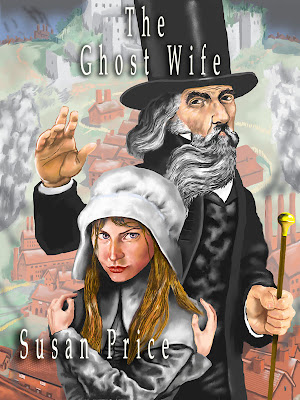 |
| The Black Country Museum from the Chapel steps |
I visited the Black Country Museum the other day.
It’s an open air museum, dedicated to the industrial history of the Black Country, with many reconstructed buildings, illustrating what life was like in the area from the late 1700s to the 1930s.
We chanced on a day when many steam engines were chuntering around the site, and as we stepped from the entrance building, we breathed in coal-smoke, and ash I hadn’t smelled in many a long year. It was the smell of my childhood. (Davy, a Scot and country boy, started coughing immediately, and said that he wouldn’t have lasted ten minutes in Ye Olde Blacke Countrie. My family lasted, but it’s true that we have generations of bronchitis, severe coughs, sinus trouble and catarrh behind us.)
We saw the ‘nodding donkey’ Newcomen engine steaming away. It’s one of the oldest surviving engines, dating from 1712, and originally built to pump water from Lord Dudley’s mines, only a couple of miles from where it stands now.
From there we visited the mine. It’s a ‘fake’ mine, but within the constraints of not actually injuring or killing visitors, an effective one. As you go round, tableau are illuminated, and a recorded voice – supposedly that of an old miner – tells you about the work done by the miners in the 19th century.
The low, narrow, dimly lit tunnels give a very real sense of the claustrophobic, awful conditions: and the mock ‘blasts’ and roof-falls are scary. We emerged into the daylight profoundly grateful, yet again, for having been born in the 20thCentury, and not having spent a childhood crouching in total darkness, to open air-doors.
The mine also provides a vivid impression of the dangers of the Black Country’s famous ‘thirty-foot seam’ (9 metre seam) – the only place in the world where you climbed a tall ladder to cut coal. Bringing the roof down was no game.
 |
| 'The Ghost Wife' ebook by Susan Price - Art by Andrew Price |
Walking around above ground, I pointed out the dark ‘Staffordshire Blue’ bricks that topped most of the walls, and made the pavements and roadways. I realised that the red and blue brick, the grey smoke and the greenery in the gardens made up the colour palette of my childhood – as my brother has so well captured in his cover for my ‘Ghost Wife’, set in the Black Country. I hadn’t realised that until I visited the museum.
We joined a lesson in the school, chanted our times tables, and practiced our handwriting on the slates, and we toured the 1920’s fairground with its helter-skelter and swingboats. We went into the cinema – we got two of the better seats, avoiding the hard benches – and watched a showing of Chaplin’s ‘Getting Acquainted’, which I have to say I found completely incomprehensible, though Davy was chuckling.
 |
| The Dudley canal tunnel |
It’s a memorable – if wet – experience, as your boat passes the sinister openings of old limestone mines, or floats from darkness into a brilliantly lit, green basin, open to the sky and birdsong. In many places the walls of the tunnel are hung with beautiful calcite ‘curtains’ of crystals in glittering lacy folds.
After the boat-trip, we visited the ‘Bottle and Glass’ Inn, where they will serve you a pint of old ale – but the place was grimly comfortless compared to a modern pub, even in the saloon bar (and no respectable woman would have crossed the threshold). Opposite the pub, of course, was the Methodist Chapel, which is used for carol services at Christmas.
There are several shops, of different dates. Davy liked the one displaying old motorbikes, and I always enjoy Emile Doo’s Chemist’s. The grocery shop was being swept out by a woman in Victorian dress. A visitor called out to her, mockingly, “I’ll have ten pounds wuth of grey pays!”
The shop-keeper replied, tartly, “I doubt yo’ve got ten pounds to yer nairm, madam – look at the sight on yer – wearing a mon’s trousers, and on a Sabbath! Yo should be ashairmed! Out on it – goo on!” The visitor was laughing too much to think of asking why the shop was, disgracefully, open on the Sabbath.
 |
| A Black Country pike |
 |
| Happy pigs |















